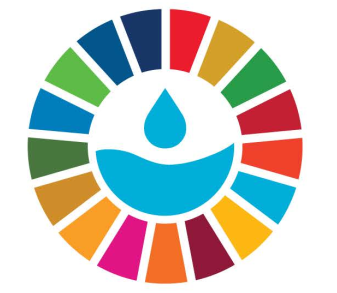Accelerate safe, reliable and affordable access to water services for all in the Danube region
Federal Ministry of Agriculture, Forestry, Regions and Water Management, Austria
(
Government
)
#SDGAction50431
Description
The Danube Water Program (DWP) is a lighthouse example for regional cooperation in the water sector in the Danube region. Launched in 2013, the DWP is an advisory and capacity building initiative in the water sector that aims at strong utilities, smart policies and sustainable services in the Danube region. The DWP is financed by the Austrian Federal Ministry of Finance and implemented jointly by IAWD (International Association of Water Service Companies in the Danube River catchment area) and the World Bank.
The DWP brings together regional, national and local stakeholders in the water supply and sanitation sector. The main objectives are
- to strengthen the water sector tailored to the regional circumstances and at different levels: i) at political level by creating the policy and regulatory environment that sparks innovation and warrants the sustainable development of the sector and ii) at utility level through inclusive education and capacity development and training initiatives
- to foster a common understanding of the state of the water sector by providing the data and knowledge required for a cross-sectoral transformation and supporting water, climate and food security related policy integration
- to overcome languages barriers in the Danube region and
- to harmonise DWP supported analytical and advisory services to national governments with existing investment projects of International Financing Institutions in the region, taking into account externalities and co-benefits.
The committment is to strengthen and enhance the support to the water sector in the Danube region on a long-term basis using networks and products created under the DWP relevant for SDG 6 implementation and supports potential outreach and know-how transfer to other regions of the world to accelerate the achievement of SDG 6.
A number of potential game changing ideas for the Water Action Agenda identified during the Stakeholder Dialogue of the Preparatory Meeting for the UN 2023 Water Conference are already implemented by the DWP, i.e. in the field of capacity development and governance.
Lessons learnt from DWP implementation in the Danube region for a successful regional cooperation are best practice examples how these activities contributed to SDG 6 implementation in partner countries. Networks and products created under the DWP will be used to strengthen and enhance the support to water sector in the Danube region to improve and accelerate SDG 6 implementation and to achieve smart policies, strong utilities and sustainable water services.
International Association of Water Service Companies in the Danube River Catchment Area (IAWD), World Bank
SDGS & Targets
Goal 3
Ensure healthy lives and promote well-being for all at all ages
3.1
3.1.1
Maternal mortality ratio
3.1.2
Proportion of births attended by skilled health personnel
3.2
3.2.1
Under-five mortality rate
3.2.2
Neonatal mortality rate
3.3
By 2030, end the epidemics of AIDS, tuberculosis, malaria and neglected tropical diseases and combat hepatitis, water-borne diseases and other communicable diseases
3.3.1
Number of new HIV infections per 1,000 uninfected population, by sex, age and key populations
3.3.2
Tuberculosis incidence per 100,000 population
3.3.3
Malaria incidence per 1,000 population
3.3.4
Hepatitis B incidence per 100,000 population
3.3.5
Number of people requiring interventions against neglected tropical diseases
3.4
3.4.1
Mortality rate attributed to cardiovascular disease, cancer, diabetes or chronic respiratory disease
3.4.2
Suicide mortality rate
3.5
Strengthen the prevention and treatment of substance abuse, including narcotic drug abuse and harmful use of alcohol
3.5.1
Coverage of treatment interventions (pharmacological, psychosocial and rehabilitation and aftercare services) for substance use disorders
3.5.2
Alcohol per capita consumption (aged 15 years and older) within a calendar year in litres of pure alcohol
3.6
3.6.1
Death rate due to road traffic injuries
3.7
By 2030, ensure universal access to sexual and reproductive health-care services, including for family planning, information and education, and the integration of reproductive health into national strategies and programmes
3.7.1
Proportion of women of reproductive age (aged 15-49 years) who have their need for family planning satisfied with modern methods
3.7.2
Adolescent birth rate (aged 10-14 years; aged 15-19 years) per 1,000 women in that age group
3.8
Achieve universal health coverage, including financial risk protection, access to quality essential health-care services and access to safe, effective, quality and affordable essential medicines and vaccines for all
3.8.1
Coverage of essential health services
3.8.2
Proportion of population with large household expenditures on health as a share of total household expenditure or income
3.9
3.9.1
Mortality rate attributed to household and ambient air pollution
3.9.2
Mortality rate attributed to unsafe water, unsafe sanitation and lack of hygiene (exposure to unsafe Water, Sanitation and Hygiene for All (WASH) services)
3.9.3
Mortality rate attributed to unintentional poisoning
3.a
3.a.1
Age-standardized prevalence of current tobacco use among persons aged 15 years and older
3.b
Support the research and development of vaccines and medicines for the communicable and non-communicable diseases that primarily affect developing countries, provide access to affordable essential medicines and vaccines, in accordance with the Doha Declaration on the TRIPS Agreement and Public Health, which affirms the right of developing countries to use to the full the provisions in the Agreement on Trade-Related Aspects of Intellectual Property Rights regarding flexibilities to protect public health, and, in particular, provide access to medicines for all
3.b.1
Proportion of the target population covered by all vaccines included in their national programme
3.b.2
3.b.3
Proportion of health facilities that have a core set of relevant essential medicines available and affordable on a sustainable basis
3.c
3.c.1
Health worker density and distribution
3.d
Strengthen the capacity of all countries, in particular developing countries, for early warning, risk reduction and management of national and global health risks
3.d.1
International Health Regulations (IHR) capacity and health emergency preparedness
3.d.2
Percentage of bloodstream infections due to selected antimicrobial-resistant organisms
Goal 6
Ensure availability and sustainable management of water and sanitation for all
6.1
By 2030, achieve universal and equitable access to safe and affordable drinking water for all
6.1.1
Proportion of population using safely managed drinking water services
6.2
By 2030, achieve access to adequate and equitable sanitation and hygiene for all and end open defecation, paying special attention to the needs of women and girls and those in vulnerable situations
6.2.1
Proportion of population using (a) safely managed sanitation services and (b) a hand-washing facility with soap and water
6.3
By 2030, improve water quality by reducing pollution, eliminating dumping and minimizing release of hazardous chemicals and materials, halving the proportion of untreated wastewater and substantially increasing recycling and safe reuse globally
6.3.1
Proportion of domestic and industrial wastewater flows safely treated
6.3.2
Proportion of bodies of water with good ambient water quality
6.4
6.4.1
Change in water-use efficiency over time
6.4.2
Level of water stress: freshwater withdrawal as a proportion of available freshwater resources
6.5
By 2030, implement integrated water resources management at all levels, including through transboundary cooperation as appropriate
6.5.1
Degree of integrated water resources management
6.5.2
Proportion of transboundary basin area with an operational arrangement for water cooperation
6.6
6.6.1
Change in the extent of water-related ecosystems over time
6.a
6.a.1
Amount of water- and sanitation-related official development assistance that is part of a government-coordinated spending plan
6.b
Support and strengthen the participation of local communities in improving water and sanitation management
6.b.1
Proportion of local administrative units with established and operational policies and procedures for participation of local communities in water and sanitation management
SDG 14 targets covered
| Name | Description |
|---|
Deliverables & Timeline
Resources mobilized
Partnership Progress
Feedback
Action Network

Timeline
Entity
Region
- Europe
Other beneficiaries
Other regions to which approaches, experiences and know-how can be transfered
More information
Countries









Contact Information
Christian, Senior Water Policy Officer, Federal Ministry of Agriculture, Forestry, Regions and Water Management

